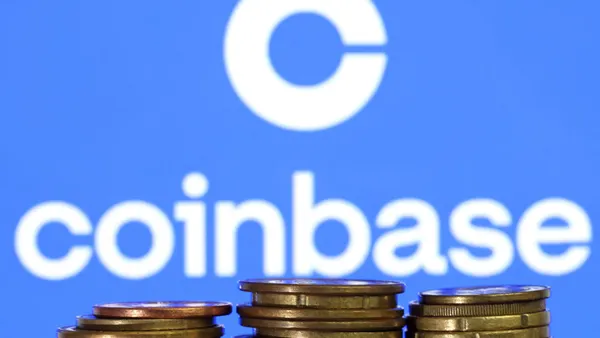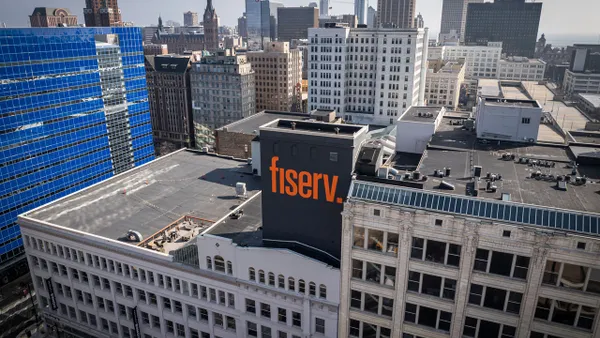Commercial banking is undergoing an evolution. Yet not all bankers recognize the coming changes. Embedded payments are a powerful opportunity to unlock new revenue growth for banks that embrace this technology – and can equally prove to be an existential threat via the continuous erosion of direct payment volumes.
In the future, the vast majority of payments will begin and end in software. In its 2021 annual payments report, McKinsey writes:
“As payments become integrated into broader customer journeys [i.e., software], the sector’s boundaries have naturally expanded … payments as a discrete experience is disappearing. The payments industry now encompasses the end-to-end money movement process, including the services and platforms enabling this commerce journey.”

McKinsey & Company
Already, embedded payments are ubiquitous. For example, consider how we travel: to pay for transportation, we rely upon software companies like Uber and Lyft. We book lodging with software platforms such as Airbnb or VRBO. We order delivery through Postmates and Doordash and take-out through Toast or LevelUp. In each case, payments are so tightly embedded within a software workflow that we often forget the technology is even there.
Embedded payments are the result of two converging internet trends: the evolution of software and the digitization of financial services. That is the fastest growing sector across the payments industry as industries and workflows digitize. Global Payments noted that 60% - 70% of new clients come from software channels. The industry is expected to grow almost 1000% from 2020 to $230 billion in new revenue by 2025. It’s a $7 trillion dollar opportunity.
How we got here
In 2011, Marc Andreessen famously wrote in the WSJ that “software is eating the world.”
He argued that we’d reached a turning point in software innovation. Internet adoption had achieved a critical mass; digital infrastructure and programming tools had reached a level of maturity to foster widespread innovation.
In the years since, software growth has exploded, delivering new experiences and replacing manual workflows. Under the surface, entire industries were getting remodeled by software. Restaurants use software to manage operations and improve margins. Property management companies use software to engage tenants and manage properties. Hospitals use software to undergird patient interactions. Even construction, freight, and logistics companies now use software to drive coordination and efficiency.
Rapid payments advances have accompanied this software innovation. As Andreessen was writing his essay in 2011, payment facilitators (payfacs) had emerged to help companies seamlessly accept credit card payments. Payfacs created the infrastructure to enable marketplaces and software applications to incorporate payments within their products. The adoption of software marketplaces (e.g. Uber, Lyft, Airbnb, Etsy) pulled this model forward significantly.
Software solves hard problems
In 2020, Credit Suisse echoed Marc Andreessen when it stated, “Software is eating the world, and payments are taking a bite.”
For developers, integrating software and payments unlocks opportunities to create engaging, compelling, and ultimately far more valuable applications. To give a few examples:
- Toast, a software platform for restaurants, integrates payments to help mom-and-pop restaurants manage their entire business operations.
- TripActions, a travel portal for corporates, integrates payments (TripActions Liquid) to give companies control and visibility over their company spend.
- Coupa, a software spend management platform, added payments (CoupaPay) to help clients pay suppliers directly within their application.
Historically, embedded payments have centered around card rails, as the alignment inherent in card networks (e.g., the rules, the standardization, the shared incentives) fostered innovation and joint investment. Nevertheless, this innovation is expanding. As software development continues across the economy—areas such as insurance, real-estate, education, logistics, lending, healthcare, and financial services—companies are now embedding bank payment rails (e.g., RTP, ACH, wire etc) as well.
Software powers better banking experiences
As a new payment flow, embedded payments have distinct characteristics and needs. And these needs are simply not well-served by the available banking infrastructure today.
My co-founders and I felt these gaps firsthand at LendingHome, building a software marketplace for real-estate borrowers. We connected our platform to the plumbing of the banking system. And we were quickly overwhelmed by the tooling and infrastructure required to make this translation work.
In particular, we saw that payments—while important—was just one component of the digital experience. We also needed:
- Application Programming Interfaces (APIs): easy software integration points to allow our software to speak to the bank’s software as needed.
- Software workflows: To run compliance on users, to collect counterparty information, and create payment orders across ACH, wire, check, and RTP. We also needed a powerful software reconciliation engine (with webhooks) to track and attribute each payment throughout the banking system.
- Dashboards: to report on the business, monitor platform activity, track failed payments, and collect approvals. We needed dashboards for our Client Support team to answer queries, e.g.“Hey, I don’t think the payment I’m owed has arrived yet. Where is it?”
Due to the pace of transactions across our platform, we could not manage these payment operations manually for very long. And yet the investment required in building out the right technology was not trivial.
Software is the front-door to financial services
Banks need to embrace software as a channel to remain a part of clients’ financial lives. Putting aside the sheer growth of embedded payments, the convergence of software and payments matters because it profoundly impacts financial services. Software is the front-door into our financial lives; the applications it powers become the “new bank branch.” Activities that once took place in person or over the phone—getting a loan, making a payment, investing in a security—now occur entirely within software.
How Modern Treasury can help
At Modern Treasury, our platform complements banks’ existing products to help them prepare for a future driven by software. We’re here to partner with banks who look to embrace software and help them grow their business and lead in the next phase of financial services.
To learn about our bank partnerships program, please visit our website or reach out to [email protected].










